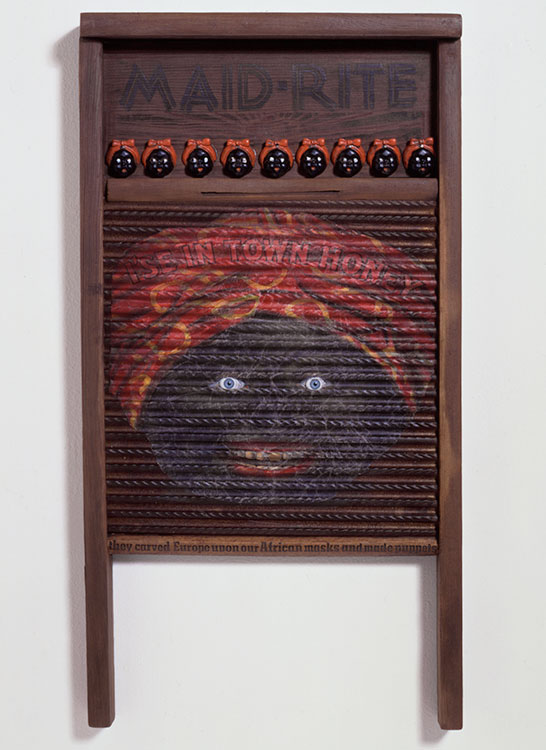
Saar began collecting washboards in the mid-1990s, inspired by memories of the one her grandmother used on her back porch. The artist has said she is interested in the “dichotomy between an object that was used to keep something clean and the person [using it], who was a slave and considered a dirty person because of the color of her skin.”
The work’s title references Aunt Jemima and her famous pancake mix, which in the 1910s and ’20s featured the advertising tagline “I’se in town, honey.” The figure of Aunt Jemima, which is based on the stereotype of a mammy, has appeared frequently in Saar’s work—inaugurated in her iconic The Liberation of Aunt Jemima (1972). In response to the recent news that the Aunt Jemima brand and image will finally be retired, Saar has said, “I transformed the derogatory image of Aunt Jemima into a female warrior figure, fighting for Black liberation and women’s rights. Fifty years later she has finally been liberated herself. And yet, more work still needs to be done.”
Betye Saar
Maid-Rite—I’se in Town Honey, 1997
Washboard with paint, stenciled lettering,
artificial eyes, and painted heads
Greenville County Museum of Art. Courtesy of the artist and Roberts Projects, Los Angeles, California.© Betye Saar.
Brian Forrest
